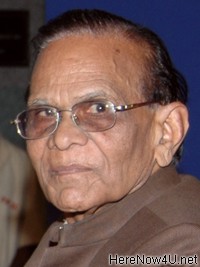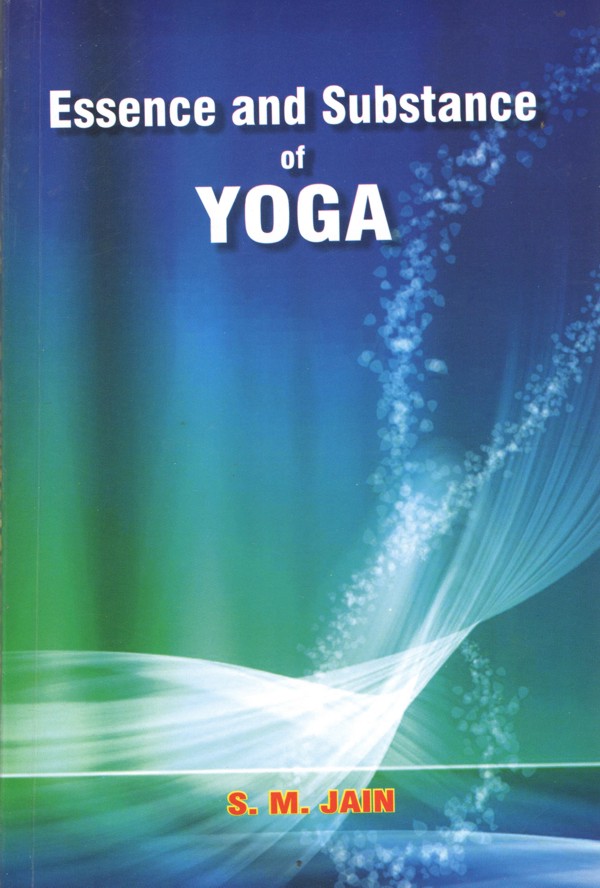Subsidiary Forms Of Vedic Yoga
Swami Vishnu Ramtirth in his book Devatma Shakti has mentioned 84 lakh forms of yoga based on the calculation that 12 zodiacs or months multiplied by 7 days in a week makes 84 which multiplied by 1000 rays of the sun and then by 100 roles of each will be 84 lakh. Another basis is 84 lakh variety of life forms and each life form has its own form of yoga. The various interpretations of yoga have been in vogue since Vedic and Upanishaden period. Following are the prevalent subsidiary forms of Vedic yoga based principally on Patañjali Yoga Sutra but with articulation of by a particular yoga system.
Hatha Yoga:
The word ‘Hatha’ is combination of ‘Ha’ which represents ‘Sun’ and ‘Tha’ represent ‘Moon’. The theory of Hatha yoga is that Sun and Moon are found in every aspect of existence. In subtle human body these are manifest in two channel ‘Ida’ and ‘Pingala’ along which perceptions travel from subtle centre (chakra) at the base of spinal chord, passing through other subtle centres near heart, throat, centre of eyebrows and finally the centre at the summit of head. In gross body lunar (moon) corresponds to respiratory cool and solar (sun) to digestive warm called ‘Prana’ and ‘Apana’.
Hatha yoga follows the eight sequential steps prescribed by Patañjali but with forced weird and odd techniques. In Hatha yoga 84 Asanas and various Mudras (Postures and Gestures) are practised. Patañjali did not mention these in Yoga Sutra. The first step ‘Yama’ through not discarded is generally ignored. The second step ‘Niyama’ which simply means internal and external purity and cleanliness i.e. of mind and body and also of ambient physical and social environment has been overwhelmingly transformed into weird practices in Hatha Yoga. For example internal cleaning of body by thrusting a long cloth in stomach through mouth, the practice is called ‘Nauti’. Another practice is ‘Neti’ which is sucking water from one nostril and pouring out by another nostril. Bathing with earth etc. and hymns are also prescribed. The practice of various ‘Bandhas’ (muscular contractions) and ‘Mudras’ (Gestures) particularly of some of the gestures is tortuous and vulgar. These are unnatural and irritating and may be even harmful. Kundalini awakening and tantras are also practised in Hatha yoga.
Raja Yoga:
It is a royal way of reintegration (Yoga). When the agitation of mind is stilled, supra-mental perceptions or visions appear and with them comes the fundamental unity of all that exit. Raja Yoga transcends even mind and steps into higher domain of spirituality. The question is what is higher domain of spirituality? It is soul or God? Both are abstract noumena not substantiated by scientific scrutiny. In Raja Yoga the eight steps have been sub-divided and there are 15 steps:
Kundalini Yoga:
It is more a tantric fantasy than yoga. It is claimed to be based on twin principle of consciousness - individual and cosmic. Accordingly it is the energy that governs an individual and also the universe. The same cosmic energy (Para Shakti) also lies dormant in individual human beings coiled 3½ times in the form of a serpent at the root of spinal cord. Kundalini yoga is to arouse and awaken this sleeping coiled energy and make it rise upwards through six energy centres called ‘Chakras’. The first is ‘Svadhisthan’ at the root of genitals. The second ‘Manipura’ is at the centre of naval. The third ‘Anahata’ is at the region of heart. The fourth ‘Visudha’ is at the base of throat. The fifth ‘Ajñana’ is between eyebrows. The sixth ‘Sahasrara’ is at the centre of the head. These centres are described as lotus-shaped with petals numbering six, ten, ten, sixteen, two and one thousand respectively. The practitioner is required to concentrate on each of these centres sequentially visualizing the number of petals, their colours and words written on them. Weird visions, fantasies and hallucinations such as furious flames of fire, black stones, majestic temples etc. are experienced (rather imagined). The process involves considerable pain, physical disorder and even disease. The whole concept is imaginary and not sustainable scientifically. There are no lotus shaped centres (Chakras) in the body. The fact is that the practitioners are fed and indoctrinated with the hypothesis and therefore experience imaginatively. It is possible because they have seen and known the lotus and this is stored in the memory. Any person blind from birth will not be able to visualize such things.
While hard and intricate practices are prescribed as necessary to awaken Kundalini (Serpent power) there is a strange case of Deepa Kodikal, mentioned in her published diary in book form “A Journey within the Self”. She experienced aroused Kundalini involuntarily without any effort on her part while sleeping, standing and even masturbating. She is undoubtedly a case of psychiatric disorder.
Nowadays arousal of Kundalini is done commercially in large number of persons by a yoga teacher, commanding the entire congregation, giving hypnotic suggestions and all feel as instructed that their kundalinis have been aroused, some start laughing, some weeping and some doing strange actions with hands, feet or whole body. This contradicts the very concept of Kundalini which implies arousal of sleeping cosmic power lying coiled in the individual and needs considerable effort, practice and expert guidance. But gullible people succumb to temptation of easy path, get hypnotized and do as instructed. Nirmala Devi has coined her form of Kundalini Yoga as ‘Sahaj Yoga’. Another yoga teacher Ram Lal Syagi demonstrates this as ‘Shaktipat’ (energy passed on to disciples by one yoga teacher, Both of them organize such camps for masses. They ridicule the very principle of Yoga which needs one’s own vigorous effort, of course guru can only guide but one has to make effort and practice himself. Shri Ram Chandra Mission, established in 1945 also trains in Sahaj Yoga, jumping directly to meditation, ignoring all previous steps Yama, Niyama and others. This is just to attract gullible people to suggest an easy path initially. However, subsequently articulated discipline, same as Yama and Niyama is enforced. The founder has coined words “Master” for the Guru and “Slave” for the disciple, which are humiliating. Transmission of energy from Guru to disciple is also advocated as in two previous systems.
Mantra Yoga:
This is practised as rhythmic repetition (Japa) of certain hermetic formulations coined as hymns or mantras which are claimed to be based on secret powers of sound. Mantra are in various formulations. There are one syllable mantras as ‘Aum’ or of two syllables ‘Soham’ or more syllables contrived in various rhythms and combination of weird and mystic word ‘Hrim’, ‘Shrim’, ‘Klim’ etc. to impress and awe the gullible followers, promising myriad benefits. It is claimed that certain mantras like ‘Aum’ have divine origin. But the fact is that all languages and their alphabets are evolved by mankind differently in different regions during different periods of time. Of all yogic practice now commercialized as cures for various ailments, the Mantra Yoga is most popular and is practised extensively as unscientific superstitious belief, claiming many precious lives by dissuading people from proper medical treatment. Mantra Yoga has also degenerated in ‘Tantras’, inflicting torturous practices like scorching the body of patients with hot iron rods etc. and also performing havans etc. including animal and even human sacrifice. In case of snake bites only those bitten by non-poisonous snakes are cured and this has magnifying effect as the practitioner claims to cure eight of ten cases and that only two died. But the fact is that only two were bitten by poisonous snakes. Mantra-Tantra are mere superstitions and should be discarded as these are impediments in path of yoga1.
Laya Yoga:
The two main steps of Laya Yoga are first the hearing of an imaginary inner sound (Nada) and second visualizing the vision of the light of self (Atura Jyoti). The scripture “Yoga Tarawali” has mentioned one hundred and fifty thousand forms of Laya Yoga based on as many cosmic sounds (Nadas). In substance it resembles Kundalini Yoga and is defined as process by which the nature energy, the sleeping power the kundalini, lying coiled at the root of spinal cord is awakened and aroused to rise to the centre of head, piercing through the intermediary six centres (Chakras). Here the medium is Laya, the imaginary cosmic sound (nada). It is also based on imagination and noumenon of Laya.
Shiva Yoga:
It is also referred as Rajadhiraj Yoga. It is described in detail in ‘Shiva Samhita’. In this the focus is on knowledge of Shiva, devotion to Shiva, contemplation of Shiva in all his attributes while setting in any auspicious posture (Asana). Various rituals related to worship of Shiva, observance of austerities are also prescribed. Shiva is regarded as Lord of Sleep and simultaneously of destruction. He is also dance guru.
Jñana Yoga, Karma Yoga, Bhakti Yoga:
This have been earlier dealt with in chapter - “Yoga in Gita”.
Asparsha Yoga:
It is a strange form of yoga and is based on “Non-Touching”. In principle it is practice of detachment, remaining aloof from all contacts, various ties, attachment to worldly affairs. The practitioner lives as a recluse. There is stress on purity of thought, speech, all body actions and of surroundings. In extremes it implies that even touching things, people including close relations will pollute. In course of time the spiritual ideology of detachment degenerated into untouchability and got entrenched as a social discrimination and religious dogma in Hindu society. In spite of strict legal provisions against untouchability it still continues. As yoga it is now only in scriptures.
 S.M. Jain
S.M. Jain
